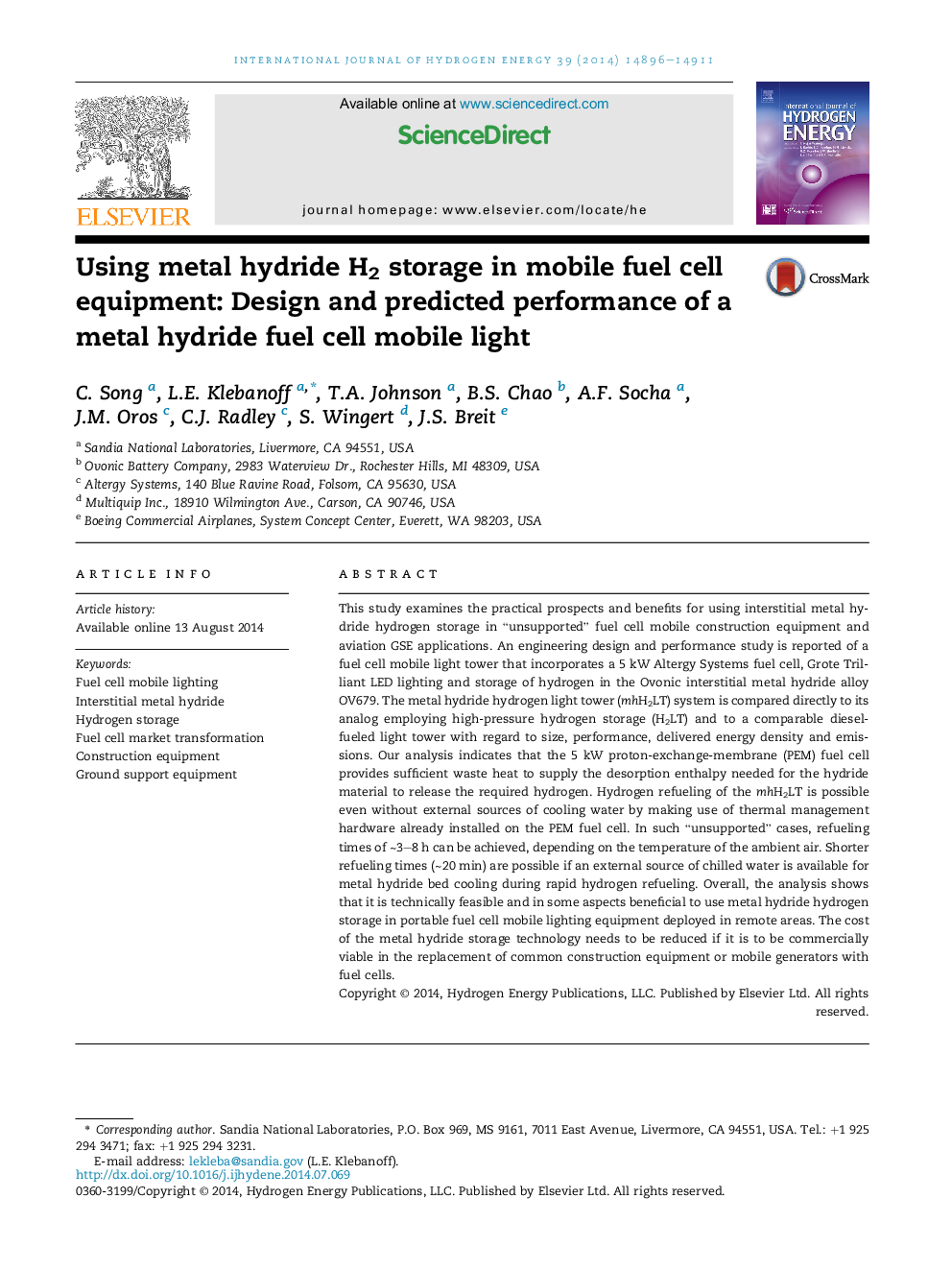| Article ID | Journal | Published Year | Pages | File Type |
|---|---|---|---|---|
| 7718097 | International Journal of Hydrogen Energy | 2014 | 16 Pages |
Abstract
This study examines the practical prospects and benefits for using interstitial metal hydride hydrogen storage in “unsupported” fuel cell mobile construction equipment and aviation GSE applications. An engineering design and performance study is reported of a fuel cell mobile light tower that incorporates a 5Â kW Altergy Systems fuel cell, Grote Trilliant LED lighting and storage of hydrogen in the Ovonic interstitial metal hydride alloy OV679. The metal hydride hydrogen light tower (mhH2LT) system is compared directly to its analog employing high-pressure hydrogen storage (H2LT) and to a comparable diesel-fueled light tower with regard to size, performance, delivered energy density and emissions. Our analysis indicates that the 5Â kW proton-exchange-membrane (PEM) fuel cell provides sufficient waste heat to supply the desorption enthalpy needed for the hydride material to release the required hydrogen. Hydrogen refueling of the mhH2LT is possible even without external sources of cooling water by making use of thermal management hardware already installed on the PEM fuel cell. In such “unsupported” cases, refueling times of â¼3-8Â h can be achieved, depending on the temperature of the ambient air. Shorter refueling times (â¼20Â min) are possible if an external source of chilled water is available for metal hydride bed cooling during rapid hydrogen refueling. Overall, the analysis shows that it is technically feasible and in some aspects beneficial to use metal hydride hydrogen storage in portable fuel cell mobile lighting equipment deployed in remote areas. The cost of the metal hydride storage technology needs to be reduced if it is to be commercially viable in the replacement of common construction equipment or mobile generators with fuel cells.
Related Topics
Physical Sciences and Engineering
Chemistry
Electrochemistry
Authors
C. Song, L.E. Klebanoff, T.A. Johnson, B.S. Chao, A.F. Socha, J.M. Oros, C.J. Radley, S. Wingert, J.S. Breit,
